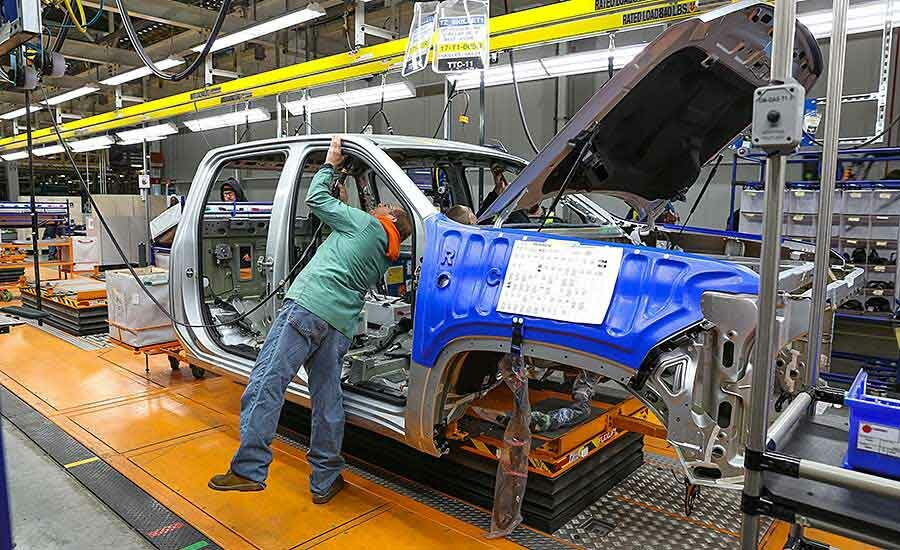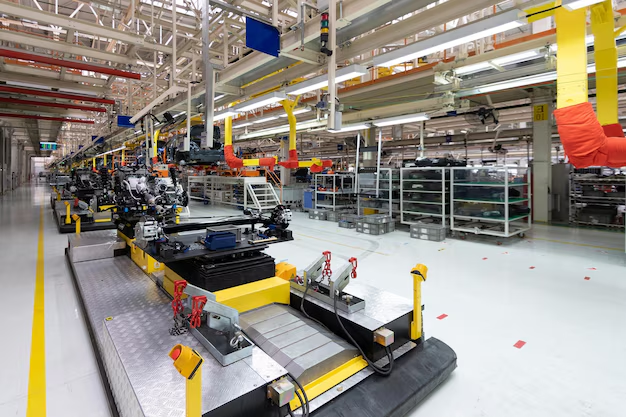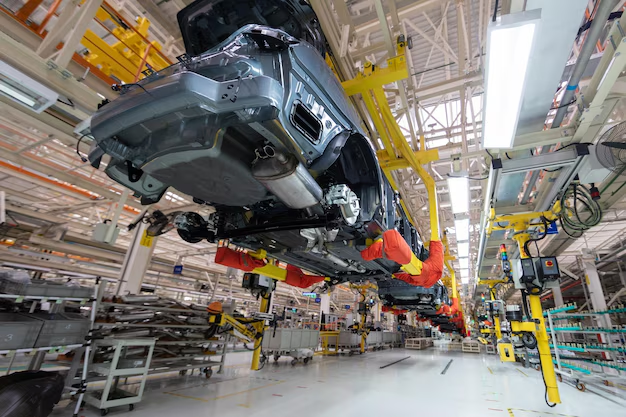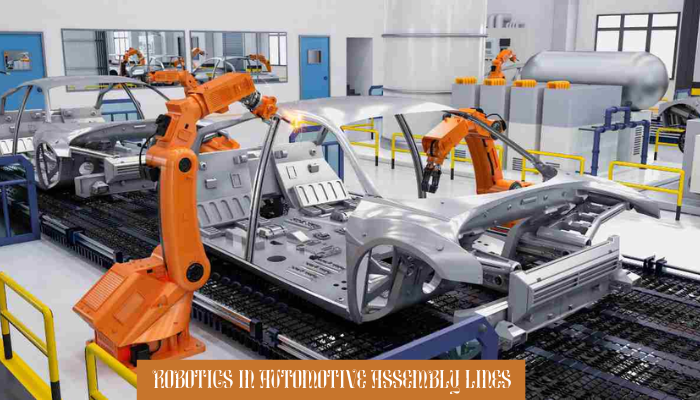In today’s fast-moving automobile industry, companies focus on working faster with greater accuracy and fewer errors. To meet these goals, manufacturers now use robots to upgrade and modernize the car-making process in Automotive Assembly Lines. Robots help them build cars more quickly and with better quality. They handle many tasks that take time or need high precision. Robots also help reduce mistakes, save money, and make the work environment safer. As a result, many companies now depend on robots to meet high customer demand and stay competitive.
Why Robots Are Essential in Today’s Automotive Assembly Lines?

Robots have become an important part of car manufacturing. Car companies now use robots to make vehicles faster, safer, and more accurate.
Robots work quickly, which helps save time and reduce mistakes. Robots can do many jobs on the assembly line. They weld metal parts, paint car bodies, and install pieces with great accuracy, keeping workers safe.
Unlike humans, robots don’t get tired. They can work all day and night without stopping. This helps car companies produce more cars in less time.
Robots also help save money in the long run. At first, they can be expensive. But over time, they lower costs by working faster and making fewer mistakes.
Because of these benefits, many car factories now use robots. Robots make car building easier and better. They are changing the way we make cars and helping shape the future of the car industry.
Automotive Assembly Lines Spotlight: “Robotics in Car Assembly – Boon or Bother?”

Benefits of Using Robots in the Automotive Assembly Lines
1. Faster Production: Robots work quickly and don’t need breaks.
2. High Accuracy: They do tasks with great precision and fewer mistakes.
3. 24/7 Work: Robots can run all day and night without getting tired.
4. Improved Safety: Robots handle dangerous work easily which keeps workers’ life safe.
5. Consistent Quality: Robots can do consistent work every time.
6. Cost Saving Over Time: After setup, robots lower costs by working efficiently.
7. Help with Heavy Work: They can lift and move heavy parts easily.
Challenges of Using Robots in the Automotive Assembly Lines
1. High Initial Cost: Buying and setting up robots is expensive.
2. Less Need for Human Workers: Some jobs may be replaced by machines.
3. Technical Issues: Robots need regular checks and maintenance.
4. Limited Flexibility: Robots follow fixed programs and may struggle with new or complex tasks.
5. Training Required: Workers need training to use and manage robots.
Cost vs. Value in Automotive Assembly Lines : Are Robots Worth the Investment?
Buying robots costs a lot of money at first. Companies spend on machines, setup, and training. But over time, robots help save money. They work faster, make fewer mistakes, and reduce waste. Robots also cut down on accidents and repairs. Many factories say the value they get is greater than the cost. So, even though they cost more at the start, robots can be a smart investment in the long run.
Future Trend: How Robots Will Transform the Automotive Assembly Lines

Robots will play an even bigger role in car-making. New robots are becoming smarter and more flexible. Some can even learn from humans and improve their work. In the future, robots and humans may work together. This will help factories make cars faster, safer, and with better quality. The future of the car industry looks bright with more robotics.
Conclusion: A Smarter Way to Build Cars in the Automotive Assembly Lines
Robots have changed the way we build cars. They make work faster, safer, and more accurate. While robots can’t do everything, they help in many ways. With the right balance of people and machines, car factories can do their best work. Using robots is a new trend and a smarter way to build cars.
Also Read : A Clear Look At What Artificial Intelligence Skills Include
Frequently Asked Questions
1. Why do car companies use robots?
Car companies use robots to make cars quickly and with fewer mistakes. Robots also help in saving time and money.
2. What work do robots do in car factories?
Robots join parts, paint cars, lift heavy things, and put pieces together. They do jobs that need speed and care.
3. Do robots can replace workers in car factories?
Sometimes robots replace people, but many times they just help. Robots often do boring or risky jobs.
4. Are robots better than people in making cars?
Robots work fast and don’t get tired. But people can solve problems and think. Together, they do the best work.
5. What will be the future of robots? Will they do more?
Yes. In the future, robots will do harder jobs and work more with people in factories.










